Vallisneria gigantea
Scientific name: Vallisneria gigantea
Family: Hydrocharitaceae
Maximum size reached under cultivation: 50 - 200 cm (19.69 - 78.74 inch)
014
Recommended pH range: 6.5 - 7.3
Recommended water hardness: 4 - 18°dGH (71.43 - 321.43ppm)
0°C 32°F30°C 86°F
Recommended temperature range: 22 - 28 °C (71.6 - 82.4°F)
Preferred propagation method: Runners
Native to: Oceania
Growth rate: Fast
Recommended substrate: Gravel
Lighting requirements: Medium
Ideal placement in tank: Background
Common Name
Giant Vallis
Propagation
Vallisneria gigantea spreads through a process known as "runner propagation." It sends out runners beneath the substrate, which develop into new plantlets, creating a dense and lush underwater landscape over time. These runners grow horizontally and produce small daughter plants along their length. Once these daughter plants have developed their own root systems, they can be separated from the parent plant and either left in place or transplanted to a different location in the aquarium.
When transplanting, ensure that the crown of the plant remains above the substrate. The crown is the point where the leaves meet the roots and is distinguishable by its lighter color compared to the rest of the plant. If buried, the crown can rot, leading to the plant's demise.
Water Flow: This plant prefers gentle water flow. Strong currents can cause damage to the leaves, especially in younger plants that have not yet developed sturdy foliage. To manage the flow, adjust the filter's outlet nozzle to reduce the current. Directing the nozzle towards the back or sides of the aquarium can significantly decrease water flow while still providing necessary circulation for the tank.
Difficulty
Easy to care for, Vallisneria gigantea is a beginner-friendly plant that requires minimal attention. It is highly adaptable to various water conditions and lighting levels, making it an ideal choice for aquarists of all experience levels. However, providing adequate nutrients is crucial for robust growth and vibrant green coloration. Fertilizing the substrate with root tabs or using a liquid fertilizer periodically will keep the plant thriving.
Maintenance: To prevent the plant from overshadowing other plants, trim the leaves regularly if they reach the water surface and begin to block light. Trimming can also help maintain the plant's shape and encourage healthier, more compact growth. It's important to use sharp scissors for trimming to avoid crushing the leaves, which can lead to decay. Additionally, removing any damaged or dying leaves by pulling them away at the base will promote overall plant health.
Short Description
True to its name, Giant Vallis can grow to impressive heights, often reaching up to 200 cm (~79 inches) in optimal conditions. The plant is characterized by its long, strap-like leaves that extend vertically, creating a lush and natural backdrop in the aquarium. Its rapid growth rate, which can be up to 1 cm (0.4 inches) per day, makes it a dynamic addition to the aquascape.
Common Misconceptions: Contrary to popular belief, Vallisneria gigantea can be pruned effectively. Regular trimming is not only possible but also beneficial, as it prevents the plant from taking over the tank. If you notice the leaves turning brown or yellow, it may be a sign of nutrient deficiency or inadequate lighting. Using sharp scissors, you can trim the leaves to your desired length or remove dying leaves to encourage new growth. For best results, avoid frequent relocation of the plant, as it is sensitive to changes and may take time to acclimate.
Acclimation and Growth Cycle: This plant usually takes about 2-4 weeks to acclimate to a new tank environment. During this period, it may shed some leaves or exhibit slower growth as it adjusts. However, once established, it can quickly become a dominant feature in the aquarium. Vallisneria gigantea grows in cycles; it may experience periods of vigorous growth followed by pauses before new leaves appear. This is a natural growth cycle and not indicative of poor care or health issues.
Substrate and Nutrient Needs: While Vallisneria gigantea is not highly demanding, a sandy substrate promotes better root development. To further support healthy growth, consider adding a layer of iron-rich substrate beneath the sand or using root tabs periodically. Additionally, using a slow-release fertilizer like JBL balls can provide consistent nutrients to the plant. Though it does not require CO2 supplementation, a CO2 system can enhance its growth rate and overall vibrancy.
Lighting: Proper lighting is key to achieving the plant's vibrant green coloration. Initially, aim for about 0.7 watts per liter to promote strong, healthy growth. As the plant matures and establishes itself, the lighting intensity can be reduced slightly to prevent excessive algae growth. The plant's ability to grow in low to moderate light conditions makes it versatile for a variety of tank setups.
Compatibility: This plant is an excellent choice for both community tanks and species-specific setups. Its long leaves provide shelter and hiding spots for shy or juvenile fish, while its hardy nature makes it suitable for tanks with herbivorous fish, as minor nibbling won't cause lasting damage.
Overall, Vallisneria gigantea is a versatile, easy-to-grow plant that adds a lush, natural look to any aquarium. With proper care and maintenance, it will thrive and become a focal point in your aquascape.


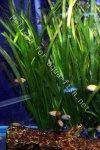
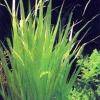 Blyxa aubertii
Blyxa aubertii Blyxa japonica
Blyxa japonica Egeria densa
Egeria densa Elodea canadensis
Elodea canadensis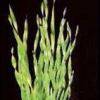 Vallisneria asiatica
Vallisneria asiatica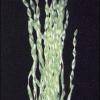 Vallisneria contortionist
Vallisneria contortionist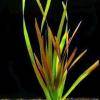 Vallisneria rubra
Vallisneria rubra Vallisneria spiralis
Vallisneria spiralis Vallisneria torta
Vallisneria torta